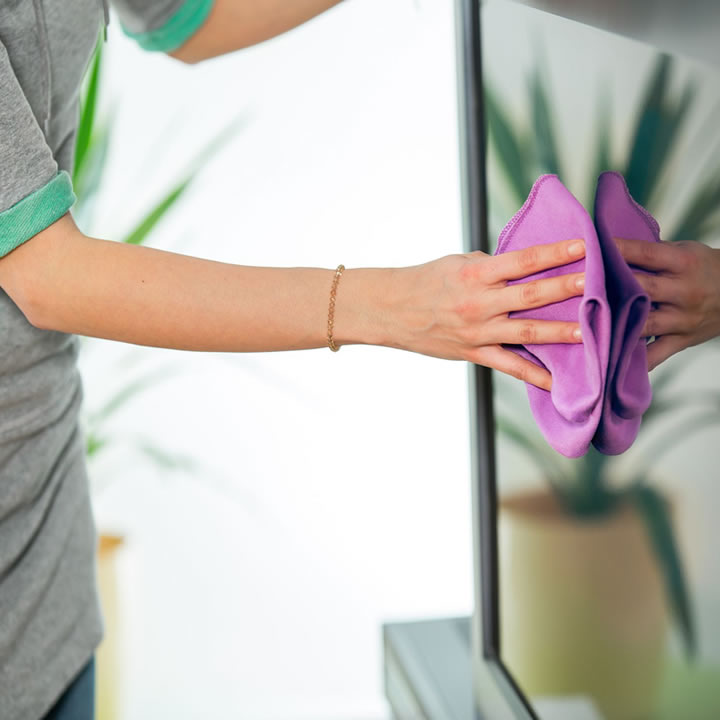To catch every second of your favourite show, you will need a television screen. And that screen should be dust, dirt, and fingerprint-free; otherwise, it would grab your attention and disturb you throughout your show. Read more detail about TV Screens here.
But using the incorrect cleaning method can negate any warranty that will still be in effect. Cleaning a glass tube television screen is about as easy as cleaning the mirrors in your home. LCD and plasma TVs have thin, flexible materials that may be easily damaged, especially by abrasive chemicals. Windex could be no-nonsense unless you’ve got an antique TV with a glass display.
You’ll also want to make sure you don’t spray liquid directly on your TV screen. It can damage its display or perhaps cause an electrical fire. So, before you start cleaning, it would be a decent idea to seem over your TV’s specific user manual so that you don’t accidentally void your warranty. If you’ve misplaced your manual, don’t fret—you can nearly always find it online.
Furthermore, more fragile LCD, plasma, or rear-projection screens can’t handle conventional damp cleaning. So clean them with a delicate, dry microfiber cloth. Spot-clean persistent smears with a pre-moistened wipe outlined for gadgets. Along with your microfiber cloth, go over buttons and the back of the TV to clean within the vents. Plasma screens, whereas made of glass, have anti-glare coatings that can be harmed by conventional cleaning items. It’s best to take after the same dry strategies you’d utilise for cleaning, driven LCD and OLED TVs.
First, locate your TV’s model number, which should be listed on a sticker on the rear of your TV. Next, run a Google hunt for that model number together with the term “user manual.” You ought to be able to download the manual as a PDF. Before attempting any cleaning, it’s best to turn the TV’s power off—this will facilitate your spot where the dust and dirt have accumulated while also allowing your TV to chill down. Employing a soft, lint-free cloth, gently wipe during a circular motion over your screen to get rid of dust, dirt or lint. The “gently” part is essential—if you scrub too hard, you may cause the liquid crystals inside your flat screen TV to misalign or go. Whatever you are doing, don’t use paper towels. They will scratch your screen and leave behind residue.
Sometimes stains require a small amount of TLC. If you’re trying to erase greasy smudges and also the dry cloth won’t do the trick, try a damp, lint-free cloth. Next, make sure to spray water directly on the cleaning cloth, not the TV screen, so wipe in an exceedingly gentle circular motion. If your TV was splattered with food (it happens!) try applying your own screen cleaning solution. Just add a drop of soap to one-fourth cup of water, mix, and apply it to a soft cloth. Gently wipe the stain away, then re-wipe the surface with a dry microfiber cloth.
Clean your TV weekly to stay dust, debris, and fingerprints from increase and becoming harder to get rid of. Make it even easier by keeping a cloth that should be microfiber, nearby to capture dust and dirt once you see it. Besides, never spray anything directly on a television screen, even glass tube televisions. Excess aerosol tumbles the cupboard and into the inner workings and damage the set. Use your vacuum’s soft dusting brush and low suction to get rid of dust from any vents, ports, and cable connections. Remember always to follow the manufacturer’s instructions if under warranty as anything you are doing that runs contra to that can void your warranty. Keep one’s hands off from products containing ammonia, alcohol, or acetone, which may damage the television’s screen.

